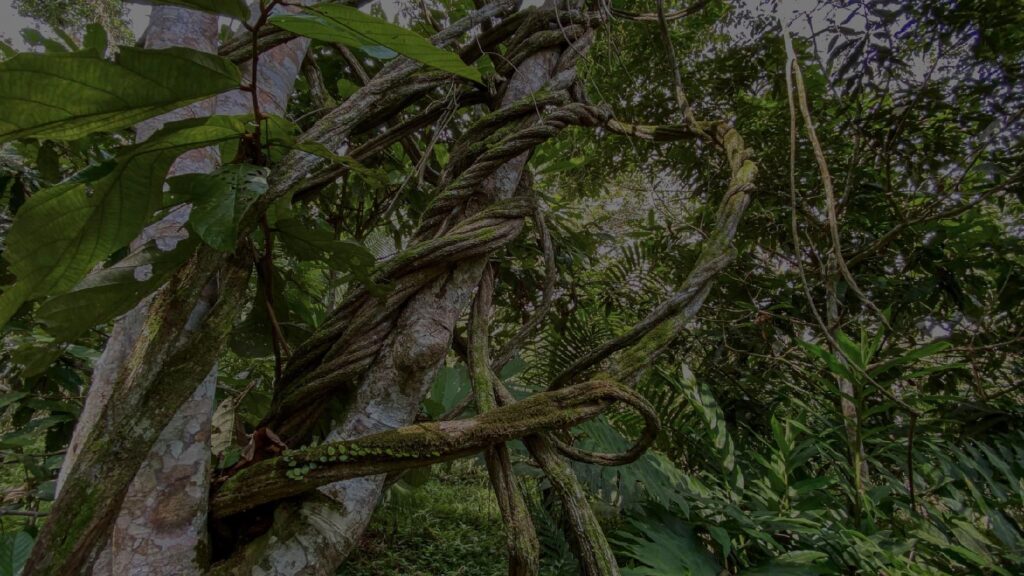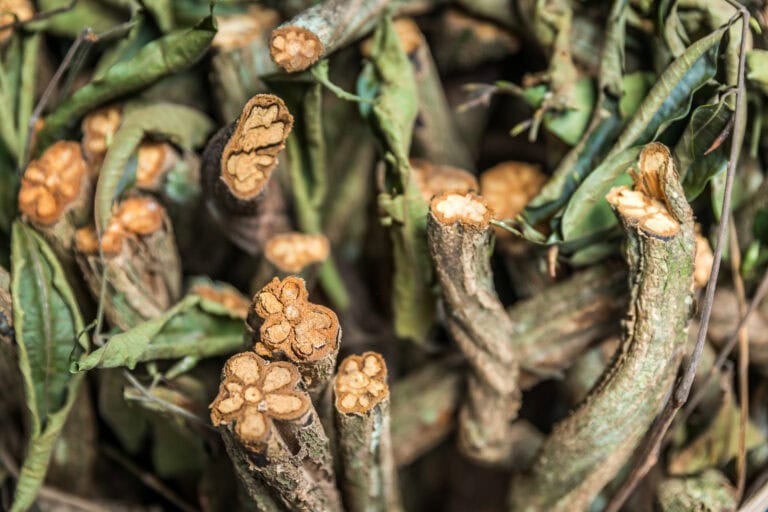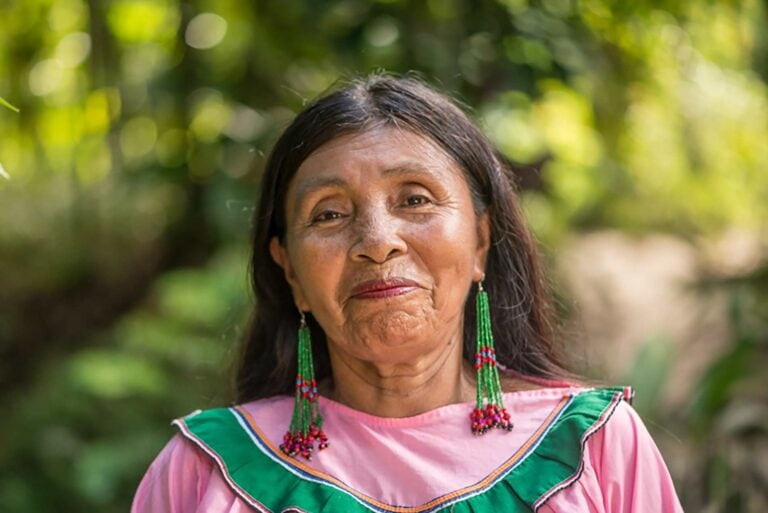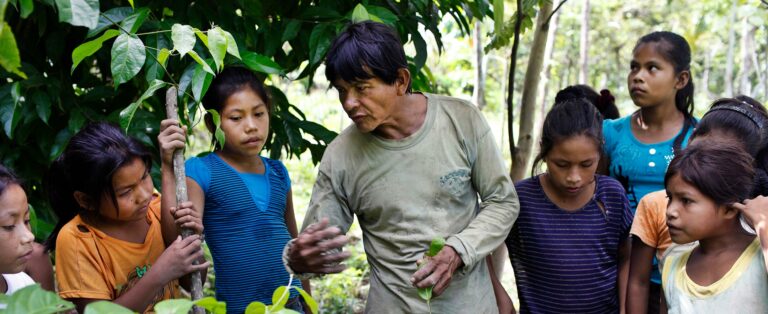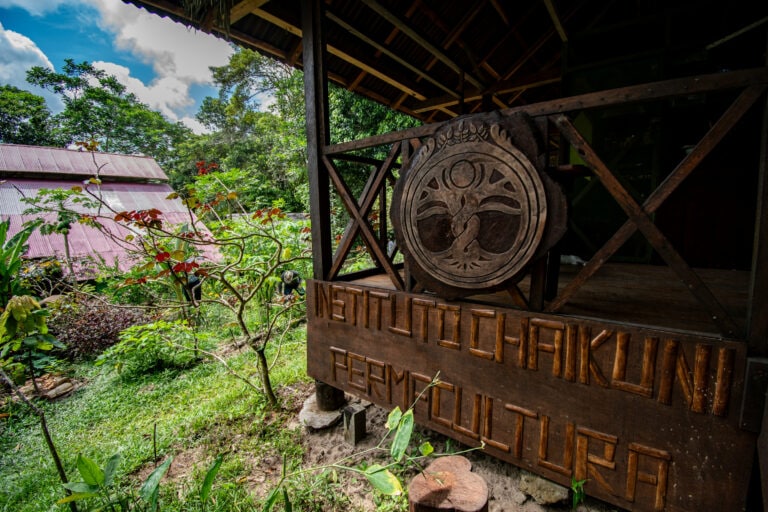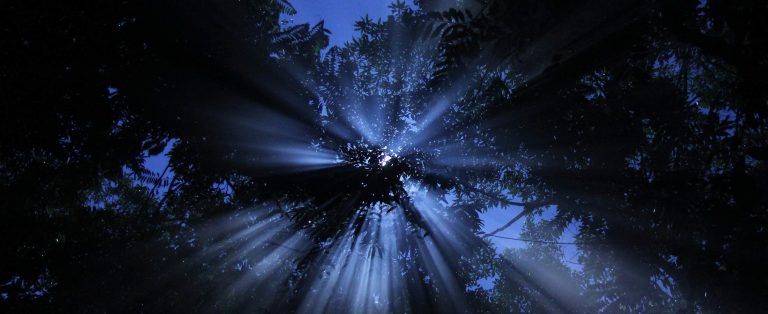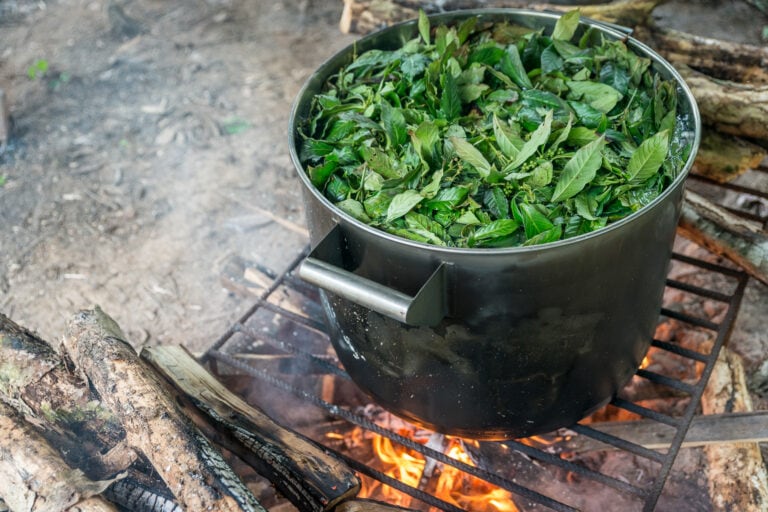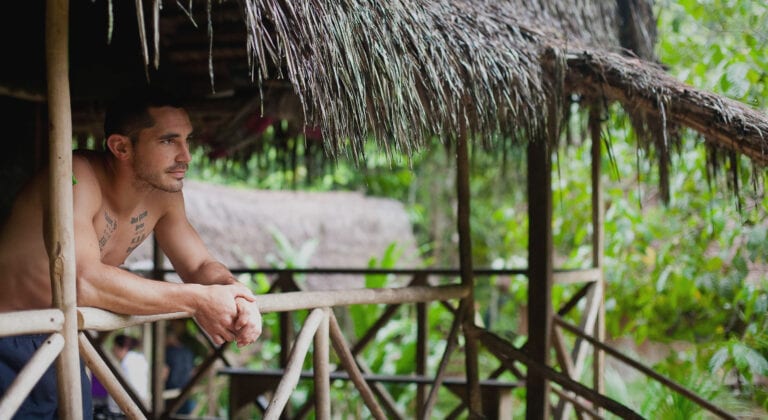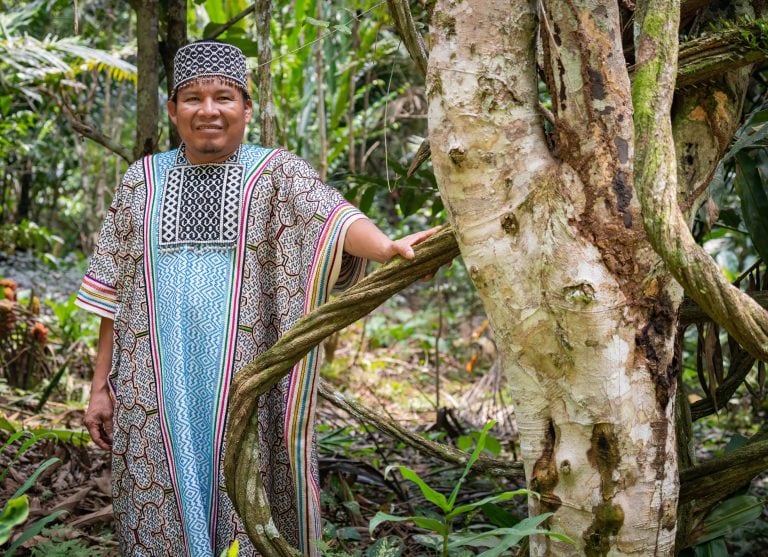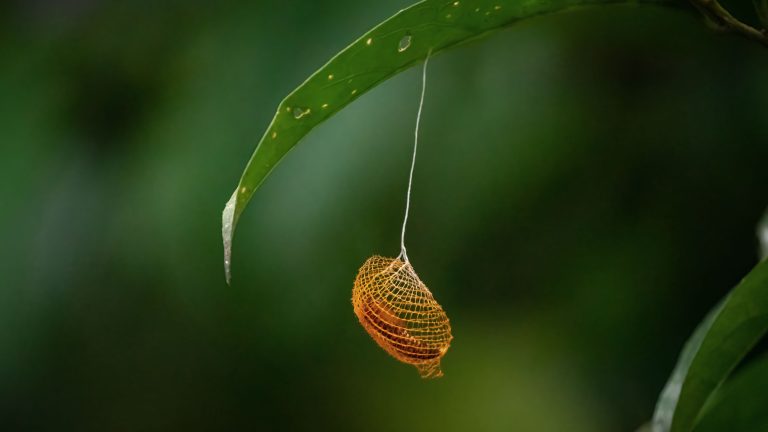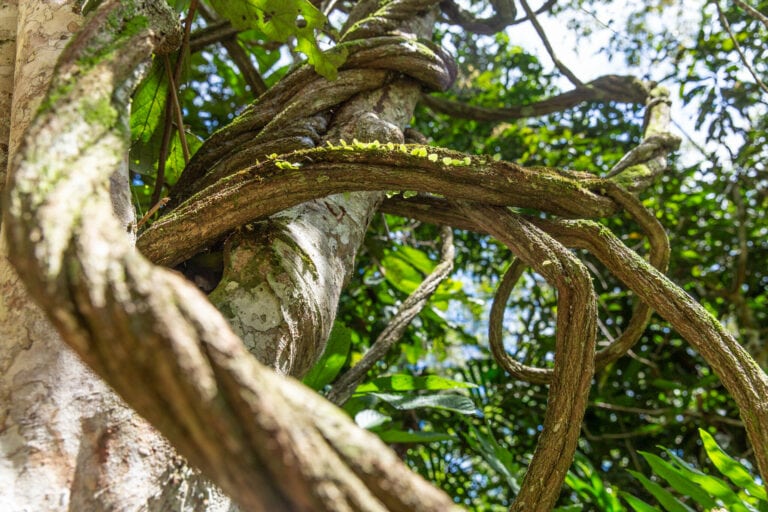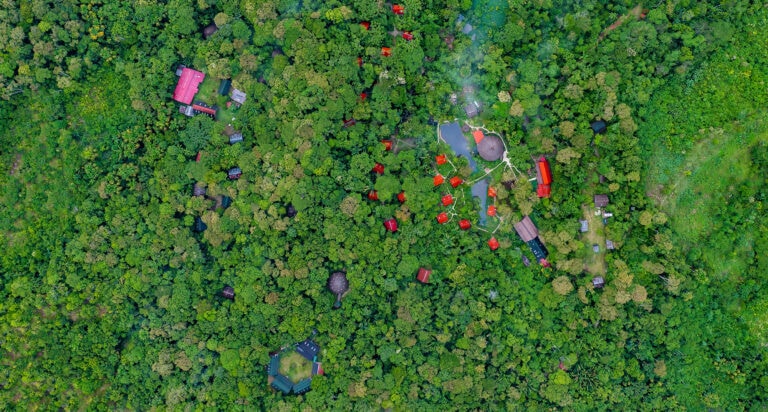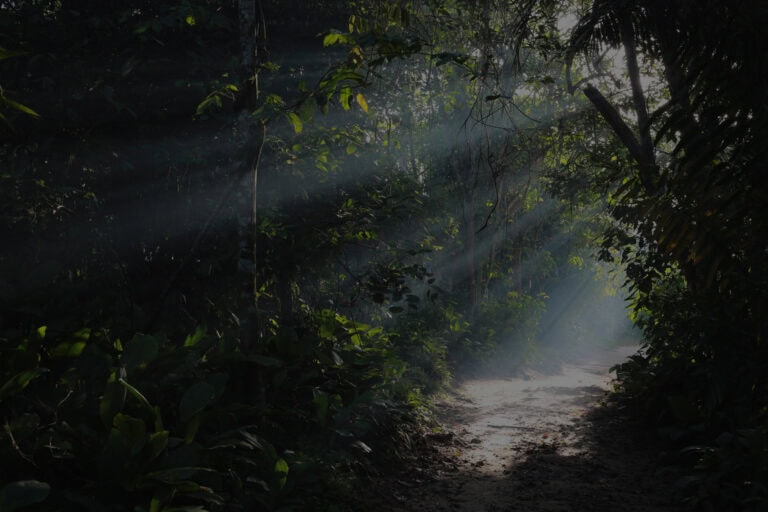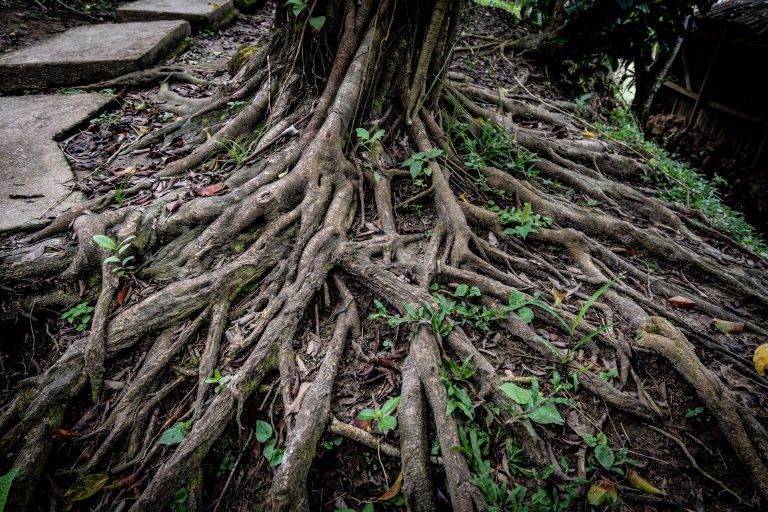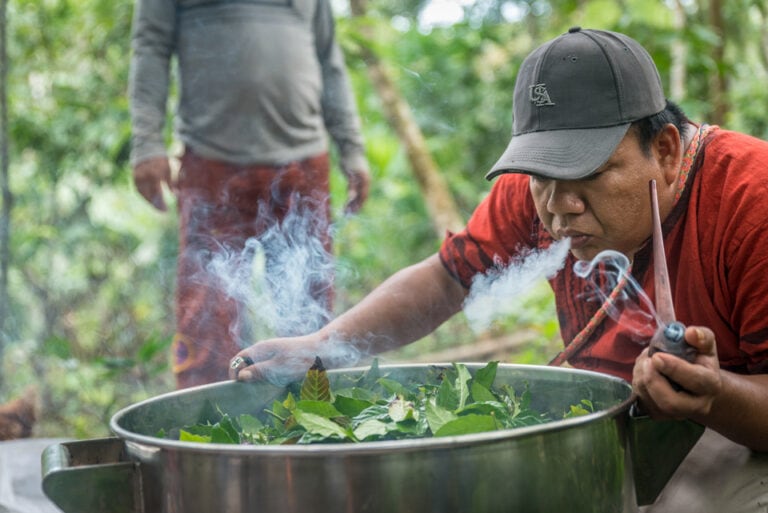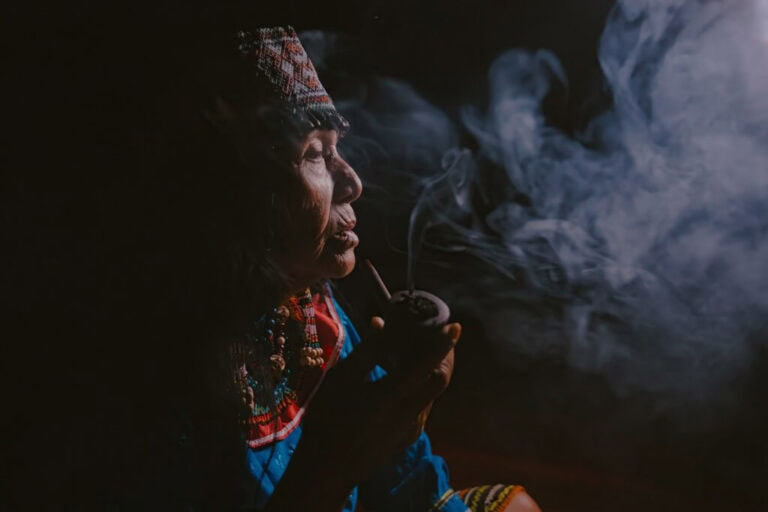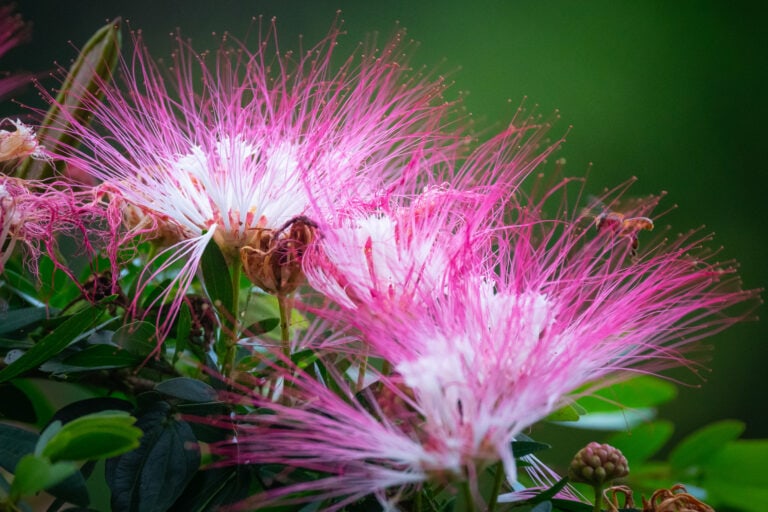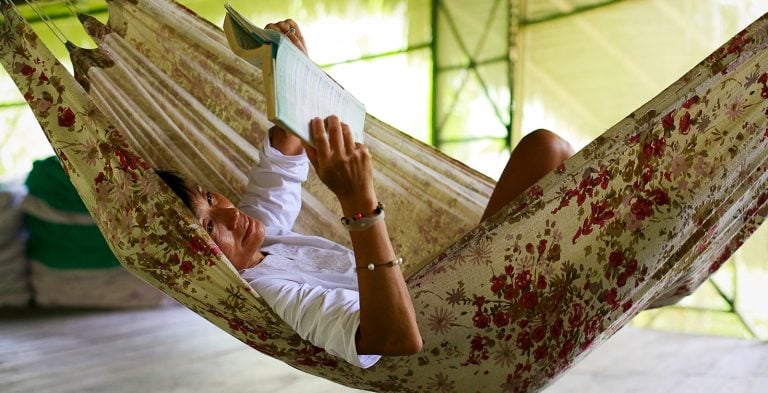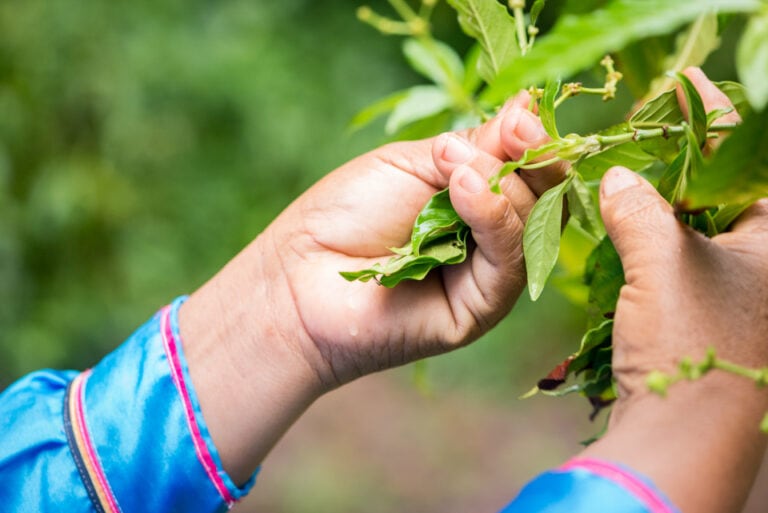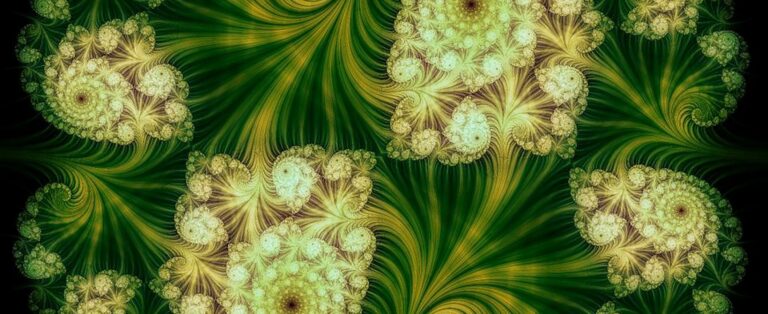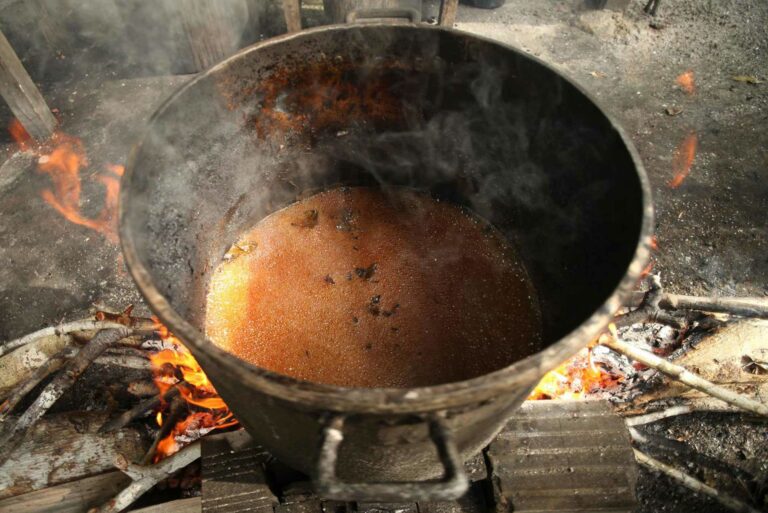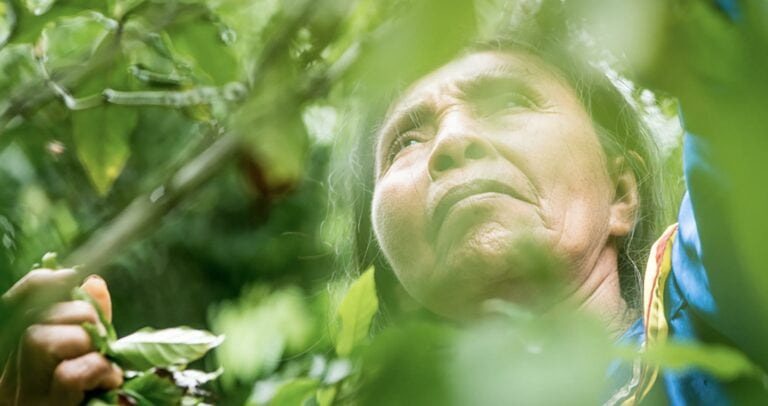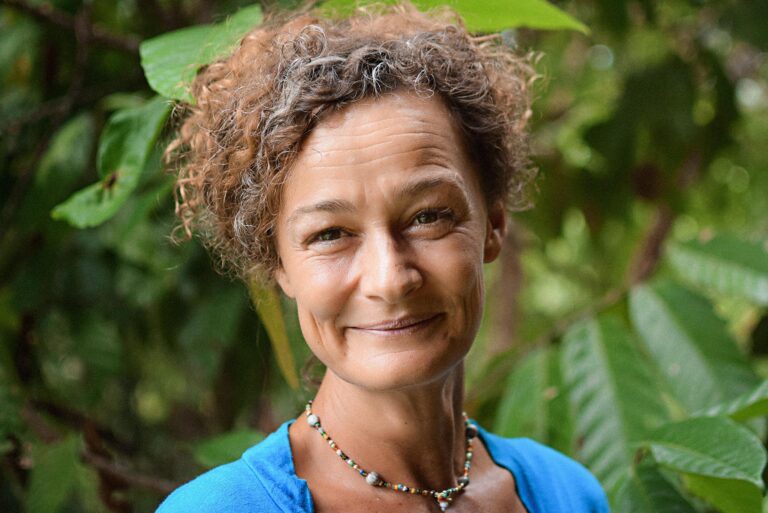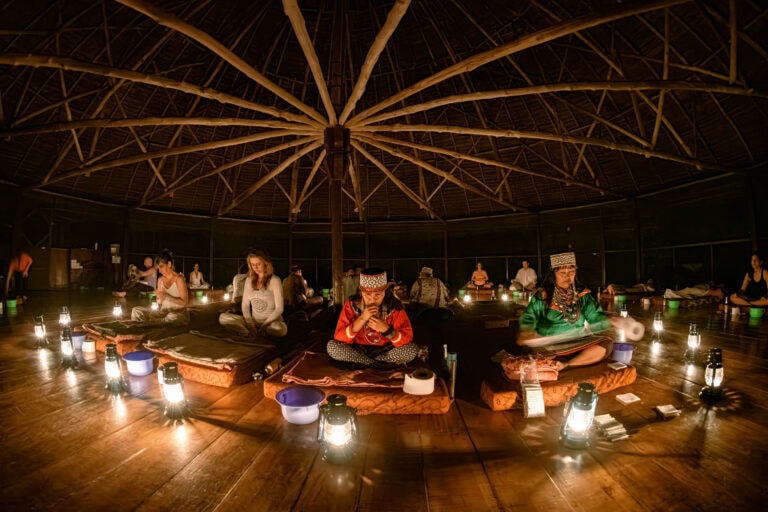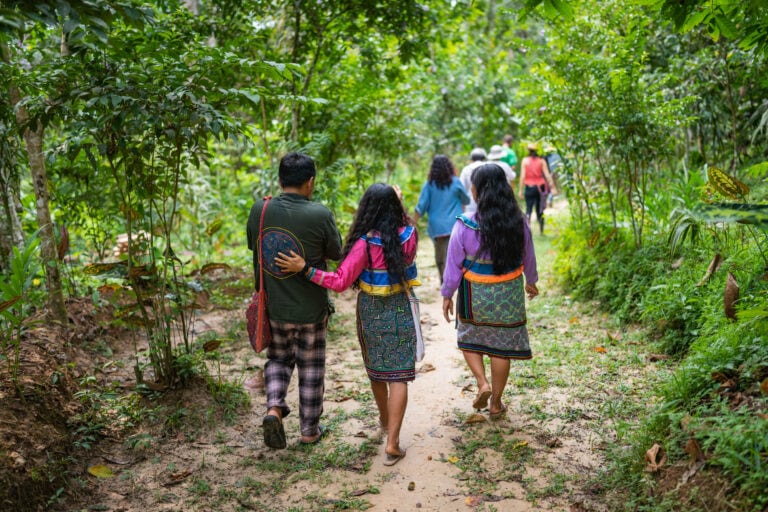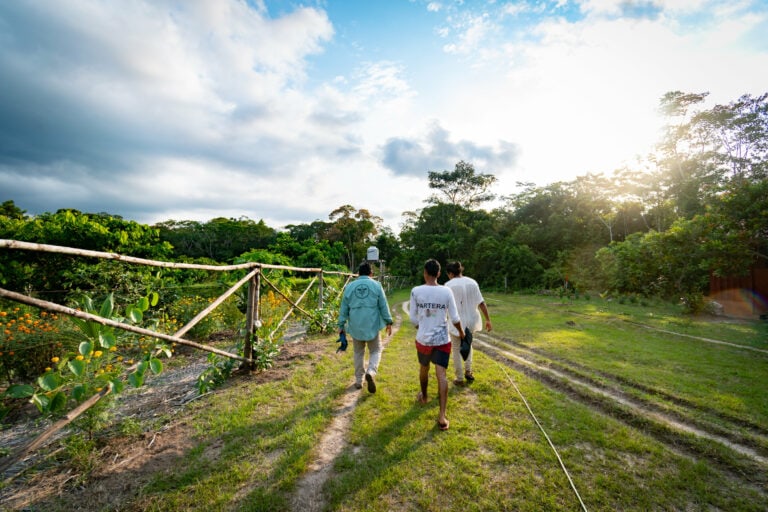Ayahuasca has been recognized as a medicinal healing agent for thousands of years by indigenous cultures along the Amazon River. Western research regarding potential therapeutic effects of ayahuasca has taken off over the past 15 years, and while still evolving, many studies have indicated that ayahuasca has the potential to produce a range of positive health and well-being effects.
Research has suggested possible effects, including:
- Reduction in depression, anxiety, and minor psychiatric symptoms (Anderson 2012; Grob et al. 1996; Barbosa et al. 2009; Rodd 2008)
- Reduction in the incidence of anxiety and depression (Fortunato et al. 2010; Da Silveira et al. 2005; Halpern et al. 2008)
- Beneficial role in overcoming trauma, panic, and post-traumatic stress disorder (Barbosa et al. 2012)
- Assistance in overcoming drug addictions (de Rios et al. 2002; Liester & Prickett 2012; Halpern et al. 2008; Fábregas et al. 2010)
- Increased confidence, optimism, and independence (Barbosa et al. 2009)
- Increased assertiveness (Barbosa et al. 2005; Harris & Gurel 2012)
- Improvements in overall psychological wellbeing (Bouso et al. 2012; Barbosa et al. 2009; Grob et al. 1996)
- Positive effects on mood, including increased feelings of calm, peacefulness, compassion, kindness, gratitude, and love, as well as feeling less judgemental (Harris & Gurel 2012)
- Enhanced cognitive and creative skills (Shanon 2000; Shanon 2006)
- Long-term changes in belief systems (Shanon 2006)
- Increased clarity about life purpose (Harris & Gurel 2012; Halpern et al. 2008)
- Better psychosocial adaptation (Bouso et al. 2012)
The International Center for Ethnobotanical Education, Research, & Service (ICEERS)
International Center for Ethnobotanical Education, Research, & Service (ICEERS) is a philanthropic, tax-exempt, non-profit organization (charity) dedicated to the integration of ayahuasca, iboga, and other traditional plants as therapeutic tools in modern society, and the preservation of the indigenous cultures that have been using these plant species since antiquity on their habitat and botanical resources.
In 2012, ICEERS composed a detailed document that includes scientific literature publications of clinical and follow-up research studies with ayahuasca. These reports indicate a very limited risk for harmful effects in the short, medium, and long-term under controlled settings. The data indicates long-term, therapeutic psycho-social effects in some studies, and can be found in the Ayahuasca Scientific Literature Overview published by ICEERS and authored by José Carlos Bouso, PhD.
In 2013, ICEERS published the Technical Report on Ayahuasca, authored by José Carlos Bouso, PhD, et al.
From 2015 to 2019, ICEERS and the Beckley Foundation conducted a landmark research project at the Temple studying ayahuasca as a therapeutic tool in modern society to evaluate the long-term effects of ayahuasca on quality of life, well-being, and health, with sub-sections in anxiety, depression, grief, and PTSD. The study is unprecedented and the preliminary results are highly significant – view the results and publications from the study here.
Research Publications on Ayahuasca
- Anderson, BT 2012, ‘Ayahuasca as Antidepressant? Psychedelics and Styles of Reasoning in Psychiatry’, Anthropology of Consciousness, vol.23, no. 1, pp.44-59.
- Andritzky, W 1989, ‘Sociopsychotherapeutic functions of ayahuasca healing in Amazonia’, J Psychoactive Drugs, vol.21, no. 1, pp.77-89.
- Barbosa, PC, Cazorla, IM, Giglio, JS & Strassman, R 2009, ‘A six-month prospective evaluation of personality traits, psychiatric symptoms and quality of life in ayahuasca-naive subjects’, J Psychoactive Drugs, vol.41, no. 3, pp.205-12.
- Barbosa, PC, Mizumoto, S, Bogenschutz, MP & Strassman, RJ 2012, ‘Health status of ayahuasca users’, Drug Test Anal, vol.4, no. 7-8, pp.601-9.
- Barbosa, PCR, Giglio, JS & Dalgalarrondo, P 2005, ‘Altered States of Consciousness and Short-Term Psychological After-Effects Induced by the First Time Ritual Use of Ayahuasca in an Urban Context in Brazil’, Journal of Psychoactive Drugs, vol.37, no. 2, pp.193-201.
- Bouso, JC, González, D, Fondevila, S, Cutchet, M, Fernández, X, Ribeiro Barbosa, PC, Alcázar-Córcoles, MÁ, Araújo, WS, Barbanoj, MJ, Fábregas, JM & Riba, J 2012, ‘Personality, Psychopathology, Life Attitudes and Neuropsychological Performance among Ritual Users of Ayahuasca: A Longitudinal Study’, PLoS ONE, vol.7, no. 8, pp.e42421.
- Callaway, JC, McKenna, DJ, Grob, CS, Brito, GS, Raymon, LP, Poland, RE, Andrade, EN, Andrade, EO & Mash, DC 1999, ‘Pharmacokinetics of Hoasca alkaloids in healthy humans’, Journal of Ethnopharmacology, vol.65, no. 3, pp.243-256.
- Da Silveira, DX, Grob, CS, de Rios, MD, Lopez, E, Alonso, LK, Tacla, C & Doering-Silveira, E 2005, ‘Ayahuasca in adolescence: a preliminary psychiatric assessment’, J Psychoactive Drugs, vol.37, no. 2, pp.129-33.
- de Rios, MD, Grob, CS & Baker, JR 2002, ‘Hallucinogens and redemption’, J Psychoactive Drugs, vol.34, no. 3, pp.239-48.
- Doyle, R 2012, ‘Healing with Plant Intelligence: A Report from Ayahuasca’, Anthropology of Consciousness, vol.23, no. 1, pp.28-43.
- Fábregas, JM, González, D, Fondevila, S, Cutchet, M, Fernández, X, Barbosa, PCR, Alcázar-Córcoles, MÁ, Barbanoj, MJ, Riba, J & Bouso, JC 2010, ‘Assessment of addiction severity among ritual users of ayahuasca’, Drug and Alcohol Dependence, vol.111, no. 3, pp.257-261.
- Fortunato, J, Réus, G, Kirsch, T, Stringari, R, Fries, G, Kapczinski, F, Hallak, J, Zuardi, A, Crippa, J & Quevedo, J 2010, ‘Chronic administration of harmine elicits antidepressant-like effects and increases BDNF levels in rat hippocampus’, Journal of Neural Transmission, vol.117, no. 10, pp.1131-1137.
- Fotiou, E 2012, ‘Working with “La Medicina”: Elements of Healing in Contemporary Ayahuasca Rituals’, Anthropology of Consciousness, vol.23, no. 1, pp.6-27.
- Gable, RS 2007, ‘Risk assessment of ritual use of oral dimethyltryptamine (DMT) and harmala alkaloids’, Addiction, vol.102, no. 1, pp.24-34.
- Grob, CS, McKenna, DJ, Callaway, JC, Brito, GS, Neves, ES, Oberlaender, G, Saide, OL, Labigalini, E, Tacla, C, Miranda, CT, Strassman, RJ & Boone, KB 1996, ‘Human psychopharmacology of hoasca, a plant hallucinogen used in ritual context in Brazil’, J Nerv Ment Dis, vol.184, no. 2, pp.86-94.
- Halpern, JH, Sherwood, AR, Passie, T, Blackwell, KC & Ruttenber, AJ 2008, ‘Evidence of health and safety in American members of a religion who use a hallucinogenic sacrament’, vol.14, no. 8, pp.SR15-SR22.
- Harris, R & Gurel, L 2012, ‘A Study of Ayahuasca Use in North America’, Journal of Psychoactive Drugs, vol.44, no. 3, pp.209-215.
- Liester, MB & Prickett, JI 2012, ‘Hypotheses Regarding the Mechanisms of Ayahuasca in the Treatment of Addictions’, Journal of Psychoactive Drugs, vol.44, no. 3, pp.200-208.
- McKenna, DJ 2004, ‘Clinical investigations of the therapeutic potential of ayahuasca: rationale and regulatory challenges’,Pharmacology & Therapeutics, vol.102, no. 2, pp.111-129.
- Rodd, R 2008, ‘Reassessing the cultural and psychopharmacological significance of Banisteriopsis caapi: preparation, classification and use among the Piaroa of Southern Venezuela’, J Psychoactive Drugs, vol.40, no. 3, pp.301-7.
- Schmid, JT, Jungaberle, H & Verres, R 2010, ‘Subjective Theories about (Self-)Treatment with Ayahuasca’, Anthropology of Consciousness, vol.21, no. 2, pp.188-204.
- Shanon, B 2010, ‘The epistemics of ayahuasca visions’, Phenomenology and the Cognitive Sciences, vol.9, no. 2, pp.263-280.
- Trichter, S 2010, ‘Ayahuasca beyond the Amazon the benefits and risks of a spreading tradition’, Journal of Transpersonal Psychology, vol.42, no. 2, pp.131-148.
- Winkelman, M 2005, ‘Drug tourism or spiritual healing? Ayahuasca seekers in Amazonia’, J Psychoactive Drugs, vol.37, no. 2, pp.209-18.
List of references above is credited to the Global Ayahuasca Project
